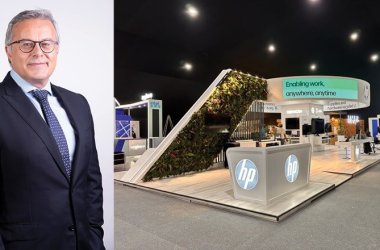
Josef Miskulnig worked in IBM from 1977 to 1996. In 1997 he decided to set up Fast Lane as both a systems consulting company and an IT training company. Along the way as business picked up speed, resource priorities started clashing, Miskulnig realised he would have to make a choice. He decided to stick to training and has never looked back since then. Today he is a preferred training partner for Cisco across the region. Miskulnig’s Fast Lane operates in Kenya, Nigeria, South Africa, Jordan and Lebanon with operations supported out of Dubai.
Right from the beginning Miskulnig also had another choice. Either, go for the volume type training with lower profit margins and commodity type, me-too training delivery. Or focus on the specialised, higher value, higher profit training delivery. Coming from systems hardware and networking background Miskulnig chose to align with Cisco rather than align with an enterprise application vendor like Microsoft.

Networking master
Today Fast Lane focuses on partner implementations of Cisco solutions. An implementation driven by a tier-one Cisco partner generates two opportunities for Fast Lane. End customers need to be trained and certified on the solution being implemented. Market expansion opportunities imply that new employees in partner companies need to be trained and certified. And existing employees need to be promoted with new certifications or recertified as required. Once end users technical staff are brought into Fast Lane training programmes, they usually continue with their own certification road maps. Approximately 33% of students are from partners; 40% from end customers and the balance are either Cisco employees or from Cisco driven projects.
“We are not turning anybody away, but our target market is Cisco channel partners and business customers. Our model is geared up for the high end of the market and not so much for the consumer,” explains Miskulnig on why entry level students may not find Fast Lane the right place to get onto the Cisco certification road map.

Payments for such type of training programmes are through tier-one partners and their cost is usually in built within the turnkey project bid. Do partners make a margin on training services? “Partners look at the overall profitability of the project. Since the training is outsourced by them we are under pressure all the time to be price competitive and to increase the partner’s total profit margin”, says Miskulnig. In other words for a partner’s bid to be competitive, all components are driven to the minimum price point and this includes the cost of training from Fast Lane.
He reflects: “In the past partners used to get away with quick fix and hands on training. Now customers are asking for specific authorised training. We also have a consultative approach on training. When there is a big tender, partners ask us what would be the right package and we mix and match different training modules. There are usually a mix of loyal partners and also adhoc ones looking for the best price.”
While tier-one partners may be the primary segment for Fast Lane’s business from a single supplier point of view, tier-two partners are also important on an aggregated scale. While they may generate lower revenue per partner in comparison to tier-one partners, on an aggregated scale their business is also significant. Since a large number of tier-two partners are being brought into the Cisco channel mainstream by value added distributors, entry level certifications are an important part of partner training programmes.
Other than partner driven projects, Fast Lane also thrives on technology life cycles. Sometime back networking technology was the need of the day, this progressed to security, followed by unified computing and wireless, leading to today’s demand driver of data centres and unified cloud computing. “Our business is surviving on the change.”
Is Miskulnig looking at expansion of Fast Lane’s portfolio of vendor solutions? The condition for such an addition: it should not be a direct competitor and should be complementary to the current portfolio. The current trio of vendor customers, Cisco, Netapp and VMware are closely integrated in the area of unified computing, data centre and cloud technology. “I strongly believe in focussing on what you are good at and the past 15 years has shown that I was quite successful. Cisco and NetApp keeps us very busy and on our toes.” He admits Fast Lane is actively looking at vendor customer expansion but alternatives meeting these conditions seem hard to find.

Vendor alignment
Global player New Horizons drives its regional training business by aligning closely with vendors. The Dubai based franchise, along with its Qatar and Kuwait operations are part of Human Soft Holding Company listed under the Kuwait Stock Exchange. Its primary training business is built around courseware from Microsoft, Oracle Solaris, Cisco, HP Education and Citrix. “The training industry has evolved a lot. We were the driving force on vendor certifications and new product launches. As we grew the demand for certification courses has became less and changed to knowledge driven technology know-how,” reflects Mohammed Aslam, COO, New Horizons.
New Horizons scans markets to track the latest in demand technologies from end users. Another driver, according to Aslam, is the regions aspirations to implement the latest technologies, solutions and upgrades. “Lots of new vendors come up, we see their implementations, what they have done, what is the market share and is there a training demand.” Microsoft continues to dominate the share of end user attention and therefore also dominates New Horizons’ training portfolio and services. Vendor customers also suggest training programmes to New Horizons based on their assessment of end user application usage and the need to upscale end users to new applications or upgrades.
New Horizons also approaches end users as a training consultant. Since it is vendor neutral and has a rich portfolio of vendor training programmes, end users are open and receptive to discussions on technology platform selection and suitable training programmes.
Regional training operations of New Horizons are able to generate a gross operating profit of 30% to 40%. While the business may set its target of profit margins, the bigger challenge is to generate these margins from the seasonality of demand, rather than from its own choice of courses and training programmes. “Profitability depends on the strategy for seasonality and offerings are not fixed,” says Aslam. Every season needs a combination of courses that meet a volume demand and have a lower price point and those that are more specialised and can command a higher price point. New Horizons’ profits are therefore an average of the profitability of individual training programmes. On site customer driven solutions are also part of their training portfolio.
What is New Horizons differentiator in the market? The first is the recent adoption of mentor led training, where students can set the pace of their learning as well as the subject of interest. The second is its ability to launch training programmes around latest vendor technologies for example cloud computing, virtualisation, Microsoft Link. Another variation is its capability to offer specialised training courses like Microsoft CRM, Great Plains and Dynamics. And the third is its ability to deliver training programmes anywhere in its area of operations.
Is New Horizons looking at expanding its vendor portfolio? “There are so many technologies within Microsoft itself that are keeping us busy,” says Aslam. For the same reason it does more of Cisco’s entry level courses rather than high end ones.
Two sides of a coin
The portfolio of vendor training programmes from Dubai based Spectrum is built around Microsoft, Juniper Networks and EC Council. For Microsoft, training programmes are limited to UAE and India and for Juniper Networks they are available across the Middle East and Africa. While Microsoft and Juniper Networks training programmes are the primary drivers for Spectrum’s business, their go to market activities are considerably different.
Partner and end user certifications are an important part of Juniper Networks training programmes. A very small component of the training is driven by end customers approaching Spectrum directly for certifications. Whenever a new technology or product is released the initial signs-ups are from Juniper Network’s partners. Once the solution comes into the sales cycle, the number of end user sign-ups also starts to increase, while the number of partner sign-ups begins to decrease. Partners are usually responsible for supporting the costs of the end user training, and this is inbuilt into the deal transaction. For skills upgrade of training partners, Juniper Networks offers partners a 50% discount when they sign up with Spectrum.
On the flip side, for Microsoft training programmes, 90% of the training is driven by end user demand requirements. “End user training is driven by IT managers and attrition of skilled resources is an important driver here,” says Sanjeev Singh, CTO, Spectrum Group. Most of the end user training is supported by training vouchers which end users receive at the time of purchase of licensed software. “We do considerable amount of training business around vouchers, because it is from the enterprise and we know the enterprise.” Spectrum does not cater to certification programmes for walk in independent professionals.
Microsoft partner led training programmes are limited in demand and usually around the most recent technologies. This includes Hyper-V, Sharepoint 2010 and Link.
The primary applications driving revenue in Microsoft training programmes are Unified Communication, Active Directory, Sharepoint, Link, Exchange and SQL Server. In 2012, Link is expected to be an important demand driver. MS Office is usually bundled as part of a bulk corporate programme and yields a low profit. It was in high demand during the Office 2007 to Office 2010 migration. At Spectrum, Microsoft courseware is offered without the Prometric certification allowing students to take up the certification exam at a later time.
The Juniper Networks training covers the security, routing and switching product portfolio as well as the four certification levels of the partner programme. Partners receive the schedule of training programmes from Spectrum on a regular basis.
For Spectrum, its volume of students trained has been growing at 40% CAGR for the last three years. However, admits Singh: “Profit has not been growing at the same rate.” A key dynamic is Spectrum’s dependence on Juniper Network partners to get them end user training registrations. “We discount training services to our key partners, so that they can bid at a lower cost and get the deal to ensure we get training students. Training is usually 5-7% of the total order.” Another flexibility that Spectrum exercises in order to get a partner deal is the unit of charge in a particular training programme, whether per man day or per batch of students or per programme.
While training programmes for Microsoft and Juniper Networks represent two contrasts within Spectrum’s business model, is there place for another entrant into its portfolio? Singh admits that Spectrum is seriously considering vendor customer expansion in the next quarter. “Adding an enterprise vendor is useful for the bottom line since the customer base will remain the same.” With Juniper Networks solutions present in almost all large enterprises, adding on an enterprise application vendor, for example, would be a complementary and positive addition. He however rules out expansion of the Microsoft training portfolio into other countries, where overcrowding of players would most likely lead to further price erosion.
High touch
Pearson In Practice is a relatively new player in the regional IT training space. It has been in delivery mode for the last two years and is now functioning in UAE. There are plans to open seven more education centres across the region. Its regional business model is meant to replicate the UK one. UK based certified instructors would be responsible for teaching in UAE. And the idea is to maintain the same level of academic standard with student certification being conducted through Edexcel. “When we talk to corporate they are very impressed with the pedigree quality of Pearson,” says Richard Firth, Regional Director ME, Pearson In Practice.
“Even though there is a recession they are still spending money on development and there are still training budgets out there. They are just choosing to spend it more wisely,” is his observation. Pearson’s portfolio currently includes an entry level and an advanced level, full time programme of 18 weeks each, as well as part time vendor certification programmes.
Firth’s confidence is also based on their previous experience. “This model has worked well elsewhere and we found the quality of delivery and pass rate is very high.” Replacement of visiting faculty with local faculty is planned for the next year.
With so many factors at play, ranging from business volatility to faster technology cycles, IT training players will need to use a new breed of marketing and business development techniques to keep their top and bottom lines margins in the green band.
Today?s IT education players need to balance a mix of high value and high volume training programmes. Demand seasonality, mixed vendor fortunes, a new breed of emerging technologies implies there no firm bets. A look at business models of some leading players.





